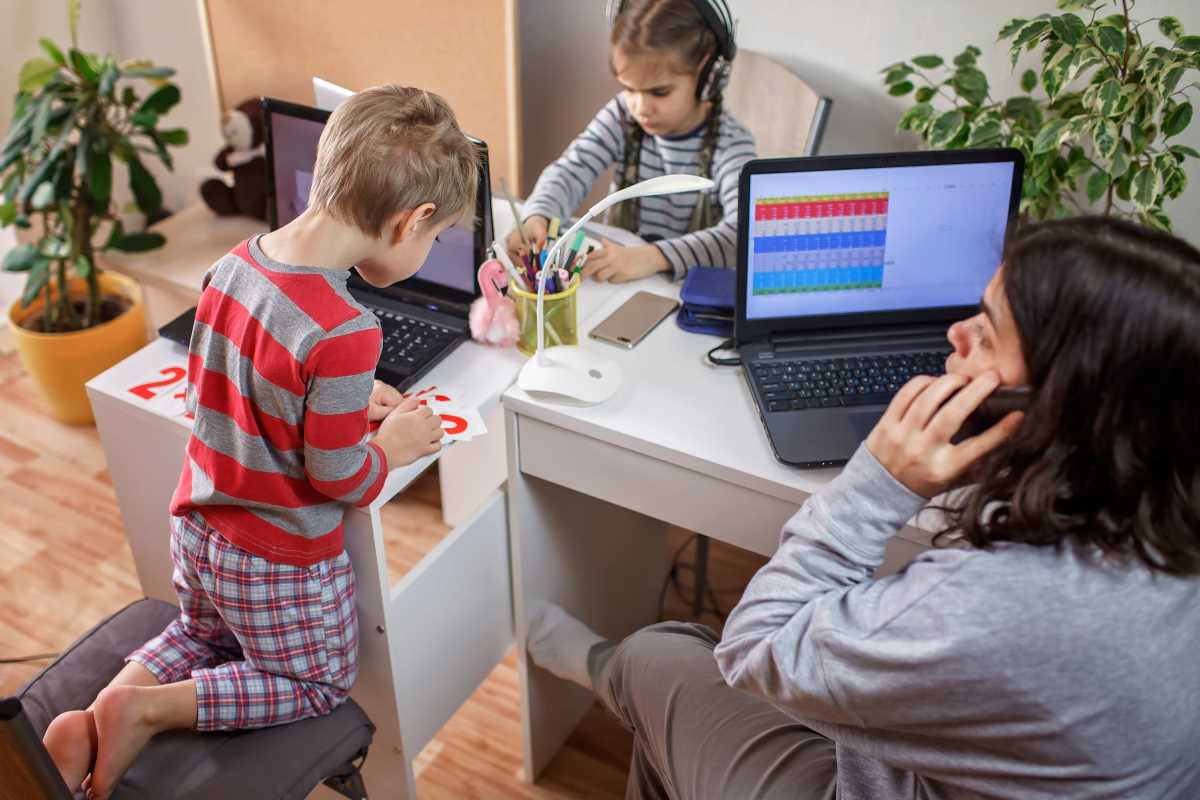Managing the dual demands of home education and remote work often feels like a daily challenge, as families strive to support their children’s learning while also fulfilling professional responsibilities from home. Each day brings new tasks and expectations, making it important to approach these overlapping roles with flexibility and resourcefulness. Finding ways to blend work and learning within the same space calls for thoughtful routines and clear communication. By making small adjustments and staying open to new methods, families can shape a home environment that encourages both productivity and educational growth, helping everyone feel more connected and accomplished throughout the day.
Daily life at home presents unique challenges, and carving out time and space for everyone’s needs can be tricky. This guide dives into practical suggestions, backed by expert insights, that will help you find that balance. By considering the specific needs of your family and creating adaptable routines, you can make home education and remote work coexist with ease.
Understanding the Needs of Your Family
Every family has its own rhythm and unique challenges. Recognize that one solution may not work for everyone. Knowing your family’s schedule, energy levels, and responsibilities takes time and communication. Evaluate daily patterns to create a plan that is both flexible and effective.
Focus on understanding when and how your family members are most productive. Perhaps the kids absorb information better in the morning, while work tasks may require quiet hours later in the day. Tailor your routines to fit these natural inclinations. Involve everyone in a discussion about what works best; this often leads to creative solutions that benefit all parties.
Creating a Flexible Schedule
Having an organized plan can greatly reduce stress. A flexible schedule helps prevent conflicts between learning tasks and work meetings. When routines adapt to the needs of both children and adults, everyone feels more in control of their day. Consider time blocks that cater to both educational requirements and focused work periods.
Here are some practical tips and tools to help build a plan that accommodates shifting demands:
- Set clear start and end times for school and work sessions to provide structure while leaving room for unexpected events.
- Incorporate regular breaks that work for both children and adults to prevent burnout and keep energy levels up.
- Use digital calendars or planning apps that allow everyone to see daily schedules and adjust events as needed.
- Create a shared family calendar that highlights important deadlines, meetings, and family time to keep everyone informed.
- Keep a backup plan ready for days when technology fails or when schedules need last-minute changes.
This approach not only encourages discipline but also gives family members the ability to manage their own time efficiently. A well-planned schedule makes it easier for everyone to transition between roles seamlessly.
Designating Learning and Working Spaces
Physical space plays a big role in how we perform tasks at home. Creating distinct areas for education and work can help reduce distractions and signal to our brains that it is time for focus. Even if space is limited, consider marking off corners or using room dividers to create a separation.
A dedicated space for learning might include a desk, good lighting, and a few educational resources nearby, while a work zone should be equipped with a reliable internet connection, your computer, and any office essentials. When areas are clearly divided, both children and adults can transition more quickly and mentally prepare for the task at hand.
Encouraging Communication and Setting Boundaries
Maintaining open lines of communication is essential. When everyone in the household understands the expectations, it becomes easier to navigate busy schedules. Clear rules about noise, interruptions, and task transitions help foster mutual respect and prevent conflicts.
Implementing boundaries involves honest conversations about personal space and time. It is important for both kids and adults to know when they have designated time for schoolwork or work assignments and when they are free to enjoy time together. Establishing these norms helps in reducing the friction that often stems from overlapping responsibilities.
- Schedule regular family meetings to discuss the day’s plan and address any schedule conflicts that may arise.
- Agree on a set of home rules that include designated quiet times, especially during high-focus work or learning periods.
- Introduce a signal, like using a special door hanger, to indicate when someone is in deep work mode.
- Create dedicated “no interruption” windows for both work meetings and class sessions that everyone respects.
- Encourage feedback among family members on how well the boundaries work and adjust them if needed.
This structured method of communication minimizes misunderstandings and helps everyone feel respected. Simple signals and organized discussions can turn a chaotic day into a harmonious schedule where all members thrive.
Practicing Self-Care and Flexibility
Amid the many responsibilities, taking care of yourself is important. Self-care is essential not only for mental well-being but also for maintaining productivity. Consider carving out moments during the day to breathe, relax, or enjoy a fun activity that recharges you.
Taking small breaks to stretch, meditate, or even take a brisk walk around the block can make a huge difference. Remember, you don’t need to aim for perfection—being flexible and kind to yourself matters more. Whether you adjust your schedule when things go off track or accept a messy home as part of the process, self-compassion forms the foundation of a balanced life.
With a clear plan and open communication, you can create a supportive home for learning and work. Stay flexible and value each step forward.







